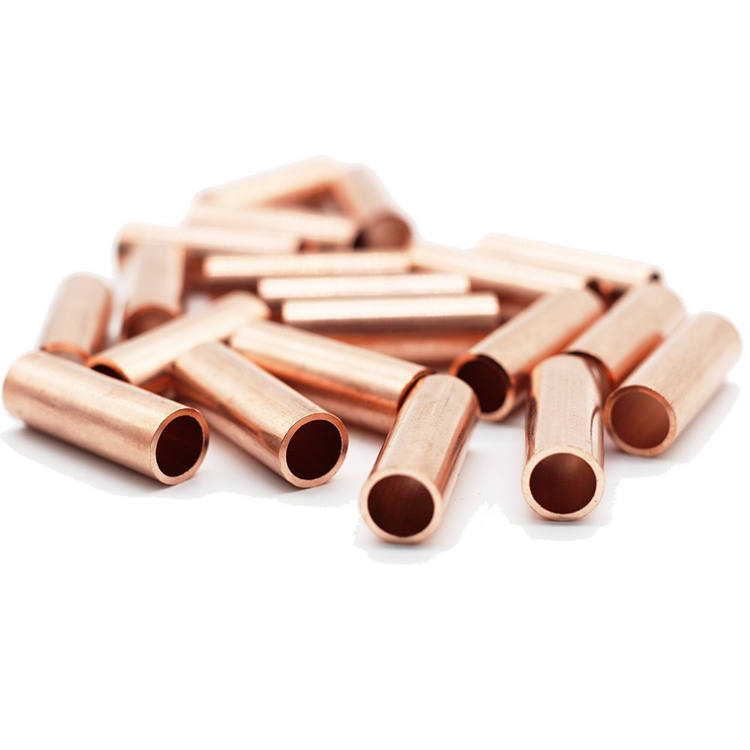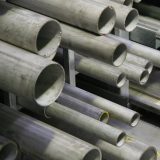What is the difference between 201 stainless steel and 304 stainless steel?
 What is the difference between 201 st...
What is the difference between 201 st...
Brass copper sleeves are an indispensable copper fitting in our lives. It is widely used in belt strips, which is an indispensable component of belt strips. It is a new type of Cr-Zr-Cu material, also known as copper rolls for preparing amorphous monomers and magnetic materials.
Copper sleeve application and carbon thermal reduction method production of beryllium-cerium oxide, beryllium copper alloy in molten copper sleeve, reduced carbon, and then the copper alloy element reaction. To use the electric arc furnace of the carbon-hot reducing beryllium-copper alloy industry, the electric arc furnace is placed in a sealed container, the operator wears a protective mask, 10% -13% first beryllium oxide and 3% ball mill -7% Toner mixed ground and then a layer of copper, a layer of cerium oxide, and toner loaded a mixture of electric arc furnace power, and the agitating power of 200 degrees Celsius is ficted after melting. Cool to 950 ° C - 1000 ° C, alloy names of flavored beryllium, carbon, residual floating, scrap, then roast, poured to 950 ° C, a ingot 2.25 kg 5 kg. No bitten wave phenomenon.

When pre-copper-plated, its components need to be shaken together together with hanging tools, which is to ensure that the colors of the plating can achieve a uniform effect. Preventing the phenomenon of the olmers caused by silver plating, affecting the appearance quality of the coating. We may know that, the actual surface area of the copper sleeve is much larger than that of the surface area we calculate, and the impact current density is 3 times higher than that of the general parts, and the pre-plated time is longer than the general part.

The brass copper sleeve is the function of the bearing. It belongs to the sliding bearing. Under the work of the sliding bearing, the relative axis is rotated, which generally requires the operation of auxiliary system. The sliding bearing is smooth, reliable, no noise. Under liquid lubrication conditions, the sliding surface is separated from the lubricant without direct contact, but it can also greatly reduce friction loss and surface wear, and the oil film also has certain damping ability, lubricating, heat dissipation, reduction, prolonging life, etc. Brass copper is mainly used in machinery, printing and dyeing, paper, chemical, aerospace, coal, oil, automotive, engineering machinery, gold and other industries. The function of the brass copper sleeve is to reduce friction, reduce vibration, prevent corrosion, reduce noise, facilitate maintenance, and simplify the structure of the manufacturing process. In the moving part, the friction can be reduced by using a brass copper sleeve due to the wear of the friction. If the copper sleeve is wear to a certain extent, you can save the copper sleeve to replace the shaft or the cost of the seat.

The brass copper sleeve is made of chrome zircon strap, high hardness, good wear resistance, good corrosion resistance in the atmosphere and fresh water, is not easy to be killed during use. In addition, brass copper sleeves have better casting and processing properties. The corrosion resistance of brass copper sleeves is mainly based on excellent corrosion resistance of dilute sulfuric acid, hydrochloric acid and fatty acid; brass copper sleeve can maintain good slide and self-lubrication performance even in the absence of lubricants and water quality. It does not produce a jamming oil; later, the surface pressure of the brass copper sleeve is high, and its bearing side pressure is also better, so the impact resistance and high load resistance of brass copper sleeve are very good.

Brass copper sleeves can be used to make components such as connecting rods, shafts, shafts, gears, worm gears, have high load, high sliding speed, and good wear resistance, and have good corrosion resistance and lubrication properties, which is very suitable for structural materials. Corrosion acid-resistant accessories, crusher parts, piston pin, friction plates, etc. Very simple, cheap, sleeve and other parts.

Ordinary brass copper sleeves are the most common and lowest cost of copper-cast copper in our lives. If we want to use it, we must first understand its processing performance. Only by understanding its own performance can better produce qualified copper sleeves.
We said that ordinary brass contains zinc in 40%, zinc needs a large amount of solution to copper. It is related to some of the performance in casting, processing, and heat treatment. Due to the small range of solidification temperature in ordinary yellow copper, the fluid hole is concentrated, and there is generally no dispersion. When the zinc content is less than 30%, the range of solidification is large. If it is quickly cooled, the zinc content in the ingot will be too high.

Ordinary brass has good molding processing performance. It can be heat treated or cold processing. The temperature elongation was determined according to the zinc content. Heating brass in heat treatment can soften it. In general, the thermal processing temperature is 200-700 ° C. If the upper temperature is exceeded, the brass copper sleeve will be soft, and the finished product is also changed.
The common brass copper sleeves we need are also affected by some impurity copper elements. Our most common elements are iron, lead, bismuth, antimony, phosphorus, arsenic and other common elements. These elements must be well controlled. Their content will directly affect the performance of our copper sleeve.
 What is the difference between 201 st...
What is the difference between 201 st... Why is 316 stainless steel better tha...
Why is 316 stainless steel better tha... 400 series stainless steel science
40...
400 series stainless steel science
40... How to distinguish the processing tec...
How to distinguish the processing tec... Non-standard design materials of bras...
Non-standard design materials of bras... What type of titanium alloy does Tc4 ...
What type of titanium alloy does Tc4 ...